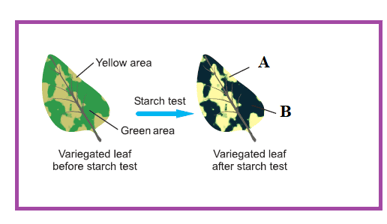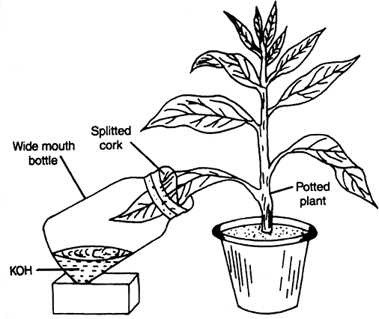A plant is kept in a dark cupboard for about hours before conducting any experiment on photosynthesis to:

Important Questions on Photosynthesis
The diagram given below is an experiment conducted to study a factor necessary for Photosynthesis. Observe the diagrams and then answer the following questions :
(i) What is the aim of the experiment?
(ii) Name the test performed on the leaf and the solution used for test.
(iii) What type of leaf was used for the experiment? Give an example.
(iv) What is the expected result of the above test on the parts labelled A and B?
(v) Give a balanced chemical to represent the process of Photosynthesis.

The figure given below represents an experiment to demonstrate a particular aspect of photosynthesis. The alphabet 'A' represents a certain condition inside the flask.
(i) What is the aim of the experiment?
(ii) Identify the special condition inside the flask.
(iii) Name an alternative chemical that can be used instead of KOH.
(iv) In which manner do the leaves inside and outside differ at the end of the starch test?

The process of conversion of ADP into ATP during photosynthesis.
During the starch test why was the leaf
(1) boiled in water (2) boiled in methylated spirit
